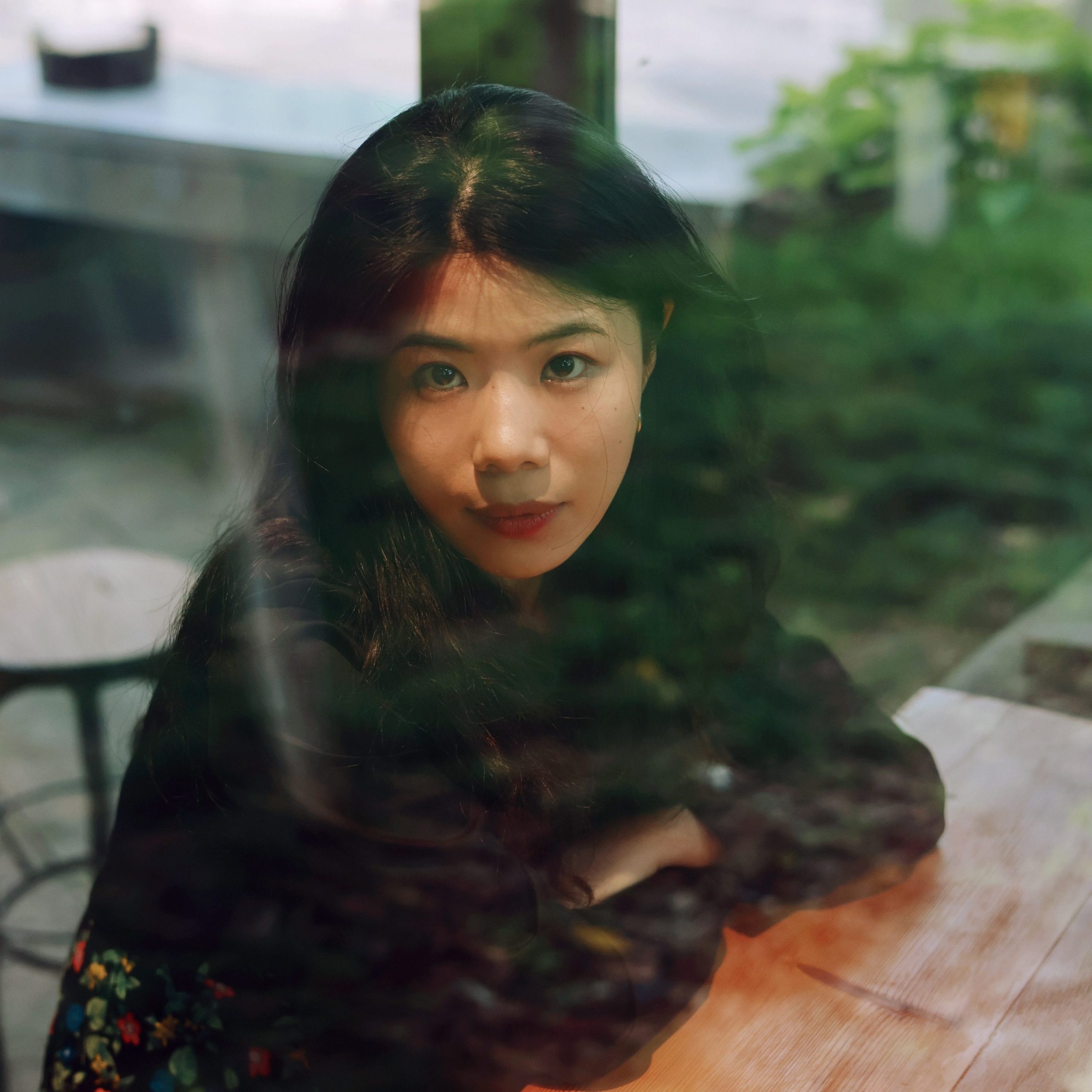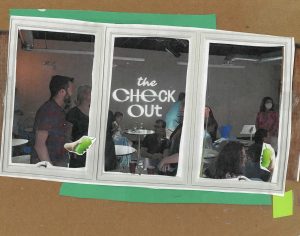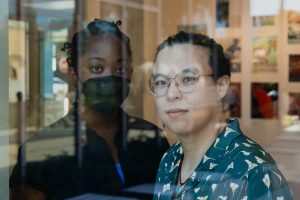
Read this essay in Mandarin here.
A Chinese garden is theatre by design. It is imitation landscape built for human company, its architecture meant to hold a particular kind of social interaction: banquets, performances, games, and crowds strolling and wandering, what Chinese calls you (遊), an aimless drifting through space that carries the connotation of dalliance.
There’s something deliciously hedonistic about this drifting, this idleness, in a Chinese garden that seems to await occupation, where the scene shifts with each intention and the winding, secluded paths traditionally breed feasts, trysts, moments of romantic longing, hours lost to daydreaming. The Chinese garden invites drifting, but also a letting go of expectations, of fixed direction. A space, though ornamental, is radically open to interruption and interpretation, and therefore a fitting but long underused setting for improvisation.
On August 23rd at Ping Tom Memorial Park, the second year of Guardians of the Earth and Sky, a performance initiated and directed by artist Irene Hsiao, brought this latent potential into view by building contemporary improvisation into the old tradition of the garden outing. Conceived by Irene Hsiao and presented by Chicago Park District’s Night Out in the Parks during her 2024 residency at the Heritage Museum of Asian Art, the work draws from Chinese cosmology’s four directional guardians: the White Tiger of the West (by dancer Amanda Maraist), the Black Tortoise of the North (by dancer Darling “Shear” Squire), the Azure Dragon of the East (by tai chi practitioner Hau Kum Kniep, in a role originated by Peter Wong in 2024), and the Vermilion Bird of the South (by Irene Hsiao herself)—and joined by storyteller Penny Li and musicians Paige Brown and Hunter Diamond.

The improvised midsummer outing, if you will, opened with a craft session where participants made animal headpieces to wear. They were guided sequentially and directionally by the four guardians and the storyteller through the park. The performance took shape as a conversation between myth, landscape, and body. As director Hsiao describes it, “The performance proceeds like a call and response—a storyteller offers background on each animal, then we transform and develop those ideas in music, song, and dance. Our actions are a way of channeling energy, offering space for meditation, and making the site visible, audible, felt.”
This progression also resembled the viewing of a Chinese handscroll, except that it was in real time and space, with both cast and audience being multicultural and multilingual. The liveness came not only from the movement of bodies during the August heat but from the spaces in between: moments of invitation, when participants spoke, sang, and danced alongside the performers. We strolled—and scrolled—onward.
Each guardian activated a new section of the park, their gestures threaded together by bilingual narration in Mandarin and English. Telling stories of the park’s history, the origins of the guardian myth, and the landscape around us: pagoda-like pavilions, courtyards that opened onto ever-shifting views, large-scale murals of palace ladies already worn by weather and time. Penny Li, the storyteller, also wove fun facts about Chinese culture into her narration, “such as the scholar’s rocks (made of limestone) in Chinese garden tradition, contrasted with the granite here that was quarried in Wisconsin. (比如文人石[材质是limestone],是中国花园文化的一部分,但公园里的花岗岩主要来自威斯康星州)” The material as well as cultural juxtapositions became part of the park’s charm.

Across the mural ran a horizontal inscription from the Tao Te Ching: “Be like water, for it is the most kind and virtuous (上善若水).“ The phrase sat above the Chicago River, where tourist cruisers passed and the sound of the trains broke in from the distance. The juxtaposition was strange, a compression of worlds of the ancient text, urban noise, and the relic of industrial modernism against the delicacy of the Chinese garden—the massive steely bridge in the background, the monumental St. Charles Air Line Bridge near the riverbank that looms large in its skeletal and muscular iron arms, almost bullying, monstrous, yet oddly elegant.
The locality of the Ping Tom performance gave the guardians’ improvisation a distinctly place-bound and place-making imagination. Their movement impersonated the park’s topography, responding to the guardian mythology, Chicago’s urban history, and the river’s edge. Each guardian seemed to draw energy from a different feature of the landscape: the White Tiger’s brisk circling around the great rock by the water; the Black Tortoise’s slow, deliberate turns along the walking bridge, their black cloak pooling and dancing magnificently in the wind; the Azure Dragon’s feather-light tai chi gestures; the Vermilion Bird’s scarlet fan flashing and closing, in a burning blaze of motion and sound.
The sequence culminated on the park’s central slope, where participants climbed upward to join the four guardians on the peak; all gathered and danced together. To move in response to the park’s form was to reread and reembody it beyond words. The movements were less of a representation of the landscape than an exchange with it through the body as a channel—and channeling—of place. A form of movement where nature passed through the body, through relation, collective movement, water, light, sound, and the wind.
Ping Tom Park sits on land that was once a railyard, along the south bank of the Chicago River, a site that witnessed the history of displacement and labor among the early Asian migrants. Penny Li noted that the park “carries special meaning” for it isn’t just “a vital gathering place for Chinatown’s community life, but a symbol of the decades of advocacy by Chicago’s Chinese community, especially longtime Chinatown residents. The park itself is a living sign of that persistence and solidarity. (Ping Tom Park对我们就更加的意义非凡。它不仅是唐人街地区非常重要的社区活动聚集地,它的存在本身就是芝加哥华人,尤其是唐人街地区的老居民不断争取的结果,也是社群凝聚力的体现。)” After the city demolished Chinatown’s parks in 1962 to make way for the Dan Ryan Expressway, promising to rebuild them but failing to follow through, two generations of children grew up without a proper playground. It took nearly forty years of community pressure, led by businessman Ping Tom and Park Commissioner Raymond Lee, before the Park District purchased the railyard in 1998 and began construction.

“Knowing about this park as a former railyard, to have the train tracks right there—hearing the train’s deafening whistle when it comes through—feels like such a poignant reminder of the history of Chinese laborers on U.S. railroads,” shared Hsiao. “The river’s flow bringing boats and people by and through, the visual connection to Chinese culture, and the land under construction past the park’s north border all speak of migration and change in complex ways. And to know that this was the park that Chinatown was given after displacement and decades without open space of its own—the work and advocacy that had to happen before it could even exist—makes me feel a great deal of respect and reverence for the people who came before.”
What Guardians of the Earth and Sky animated, then, was a playground with a fraught past, honored and recovered through the act of play itself. “Both children and adults stayed engaged,” Penny shares, “making their animal headpieces, listening to the stories, taking in the performances, and simply enjoying the beauty of the park. Some participants returned after joining us last year; others followed us from one park to another. That shows how enriching and expansive this event has become. (让我最惊喜的是,孩子们和大人们都保持着很好的专注度,很认真的去参与headpiece制作,聆听storytelling,以及感受表演,感受公园德美。我们也遇到去年来了今年还来的参与者们,还有去了这个公园再来另外一个公园听的参与者们,这说明这个活动的丰富性是多维度的。)”
To play and to roam during a garden stroll, in the Confucian ideal, is also a moral code to be united and attuned to the world, to nature, and to the community. The Analects curiously upholds the vision of disciples returning from a spring outing by the river, singing and dancing on their way home, as the ultimate utopia. While Confucianism is perhaps the most ill-fitting frame one could imagine for the free-moving, cosmopolitan reincarnation of the Guardians of the Earth and Sky in a Midwest Chinatown park, its improvisational worlding of the guardian myth, impersonating the Ping Tom landscape and joined by the Chicago crowds, unintentionally reclaimed that utopia of ethical wandering.

About the Author: Sihan Wang is a writer, scholar, and guqin practitioner. She is an incoming Visiting Assistant Professor in modern Chinese cultures at Northwestern University, where she received her PhD in Comparative Literary Studies & Asian Languages and Cultures in 2025. She is interested in the question of alternative temporality in creative forms. She currently researches and publishes on how modern and contemporary artists and writers rework Chan Buddhist aesthetics to experiment with ways of making and experiencing art and time.



